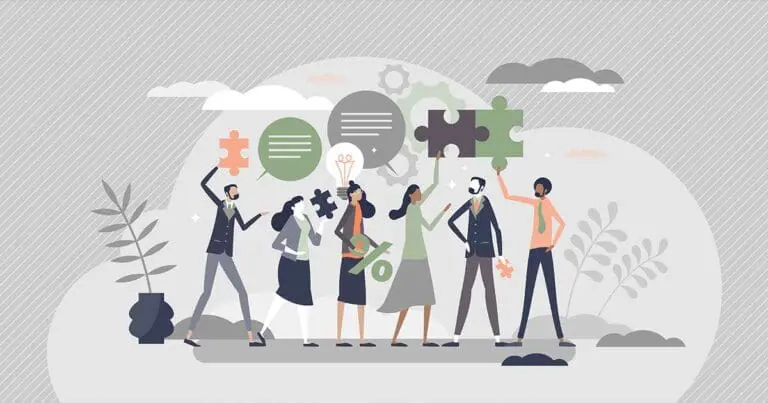What Are Employee Resource Groups? Examples & Benefits

Employee Resource Groups (ERGs) are a powerful tool in the corporate world, providing an avenue for employees to come together and feel supported within their workplace.
ERGs have grown in popularity over the years as businesses begin to recognize their many benefits, which range from improved morale to increased productivity.
So, whether you’re an employee who’d like to make a case to your company to start an ERG or you represent an organization that’s exploring its ERG options, take some time to learn everything you need to know about ERGs including examples and how they can make a difference in your organization.
What are Employee Resource Groups (ERGs)?
Employee Resource Groups (ERGs) are voluntary, employee-led groups that foster a diverse, inclusive workplace aligned with the organization’s mission, values, goals, business practices, and objectives.
They serve as a resource for members and organizations by fostering a sense of belonging, providing professional development opportunities, and contributing to the overall employee experience.
Through ERGs, employers can tap into the diverse perspectives of their workforce, enhance employee engagement, and drive innovation.
What are the most common Employee Resource Groups(ERGs)?
The most common Employee Resource Groups (ERGs) span a broad spectrum of identities, experiences, and interests, reflecting the diversity of the workforce, and include:
- Women’s ERGs
- LGBTQ+ ERGs
- Racial/Ethnic Minority ERGs
- Veterans ERGs
- Disability ERGs
- Young Professionals ERGs
- Working Parents ERGs
1. Women’s ERGs
These groups aim to support and empower female employees, offering mentorship, networking, and professional development opportunities.
2. LGBTQ+ ERGs
These ERGs provide a safe and inclusive space for LGBTQ+ employees, advocating for equal rights and fostering an understanding of LGBTQ+ issues in the workplace.
3. Racial/Ethnic Minority ERGs
These ERGs support employees from various racial and ethnic backgrounds, promoting cultural understanding, equity, and inclusivity.
4. Veterans ERGs
These groups assist with the transition of veterans into the civilian workforce, providing resources and support to meet their unique needs.
5. Disability ERGs
These ERGs focus on creating a supportive and accessible workplace for employees with disabilities, advocating for accommodation and inclusivity.
6. Young Professionals ERGs
These groups offer support to early-career employees, providing opportunities for networking, mentorship, and career development.
7. Working Parents ERGs
These ERGs offer resources and support for working parents, addressing the challenges of balancing work and family responsibilities.
Why should organizations have Employee Resource Groups?
Organizations should consider establishing Employee Resource Groups (ERGs) for several compelling reasons that include promoting diversity and inclusion, talent development, employee retention, business insights, reputation management, and fostering a culture of communication.
Promoting Diversity and Inclusion
ERGs help foster an inclusive workplace environment by encouraging the celebration of diverse backgrounds and experiences. They can assist organizations in becoming more aware of and addressing unconscious biases.
Employee Engagement and Retention
By providing a platform for employees to connect over shared identities and experiences, ERGs can significantly boost employee engagement and job satisfaction, leading to higher retention rates.
Talent Development
ERGs often offer professional development opportunities such as mentoring, training, and leadership programs, enabling employees to grow their skill sets and advance their careers.
Business Insights
ERGs can provide valuable insights into diverse markets, helping organizations create products, services, and strategies that resonate with a wider audience.
Reputation Management
Organizations with active ERGs often demonstrate a commitment to diversity and inclusion, bolstering their reputation among potential employees, customers, and investors.
Culture of Communication
ERGs can play a critical role in fostering a company culture that values diversity and open communication, leading to the exchange of fresh ideas and perspectives.
Employee Resource Groups
Employee Resource Groups (ERGs) can have great benefits for organizations, from encouraging diversity and inclusion to boosting employee engagement.
It’s important to remember, however, that ERGs are most successful when they are run properly and have strong support from leadership.
Before establishing an ERG, organizations should create a plan outlining the desired objectives of the group, how it will be structured and run, and how success will be measured.
Looking to hire top-tier Tech, Digital Marketing, or Creative Talent? We can help.
Every year, Mondo helps to fill over 2,000 open positions nationwide.
More articles about hiring and industry trends:
- The Rise of Design in Healthcare and Its Benefits
- How Data & Analytics Can Improve Customer Experience: Tips & Strategies
- The Costly Consequences of Project Delays and How To Prevent Them
- Adobe XD May Be Discontinued: What This Means for Creatives & Employers
- How to Build Employee Engagement in a Remote Workforce
- Google Analytics 4: What Your Organization Needs To Prepare
- Big Tech Job Cuts Don’t Mean Demand for Tech Professionals Is Over
- Benefits of Digital Transformation in Healthcare with Examples
- HR Technology in Hiring: Streamlining Your Recruitment & Onboarding



